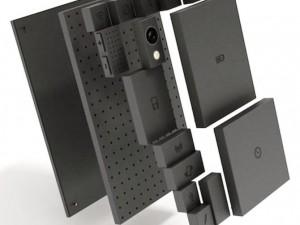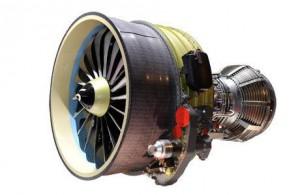We have seen seismic changes within the 3D printing industry these last couple of years. Spurred on by the large scale open source movement, behind a bulk of the FDM technology used in the majority of consumer based  3D printers, the industry has advanced very far, very fast. What’s even more unbelievable than the pace of innovation within the industry, is the fact that much of this innovation was done with very little, in terms of R&D capital.
3D printers, the industry has advanced very far, very fast. What’s even more unbelievable than the pace of innovation within the industry, is the fact that much of this innovation was done with very little, in terms of R&D capital.
Yes, there are a few 3D printer manufacturers worth several billion dollars a piece, spending tens of millions of dollars on R&D each year, however, this pales in comparison to that of other technologies. Also, the most remarkable changes we have seen, with the drastic drop in prices for consumer level printers, have come mainly from start up companies. This is all about to change though in the next couple of years. If you think that the pace of innovation has been impressive up until now, wait until the large-cap companies begin throwing billions of dollars into R&D around 3D printing.
There are several multi-billion dollar companies, with hoards of cash, who will soon, if they are not already, be jumping into the additive manufacturing space. Here is a look at how several companies could take 3D printing to a whole new level, advancing the technology further than imaginable, within a few short years.
Google
Google has already shown a great deal of interest in 3D printing. In fact they are working on what could be a multi-billion dollar project, with 3D Systems, on Project Ara. They will be using 3D Systems’ new production line of  3D printing, which utilizes a racetrack-like architecture to print mass quantities of items with an outside-the-box method. It is unknown what, if anything, Google has contributed to the development of this new technology, but if Project Ara is a success, we could see Google begin spending heavily on R&D related to mass production 3D printing.
3D printing, which utilizes a racetrack-like architecture to print mass quantities of items with an outside-the-box method. It is unknown what, if anything, Google has contributed to the development of this new technology, but if Project Ara is a success, we could see Google begin spending heavily on R&D related to mass production 3D printing.
This wasn’t Google’s only foray into getting involved with 3D printing. In fact, just a couple weeks ago, Google announced that they had partnered with 3D printing service provider Shapeways to print free bracelets out for young women, in their initiative to get more school-aged girls interested in coding.
Google has billions of dollars in cash, and isn’t afraid to spend it like some other companies. What may be the entire annual revenue stream of a company like 3D Systems, is pocket change for Google. They could pump $1 billion into 3D printing R&D and shareholders would barely notice the money missing.
General Electric
 GE has known for years that 3D printing would play a part in manufacturing in the coming years. Most likely though, even they had no idea how quickly the technology would progress, and how fast adoption rates would pick up, until only recently. The company is already spending decent money on additive manufacturing, but as they begin seeing a point where 3D printing’s benefits are greater than that of traditional manufacturing, they will begin ramping up their R&D budget. Just as with Google, GE could drop a billion dollars a year into R&D and very few would notice. For a company as large as General Electric, in house, company developed, 3D printers may work best, as they need specialized parts made to cater to their specific needs; parts which currently may not be able to be produced with machines on the market today. As GE begins investing heavily into the technology, this will spur on comparable investments from competing corporations among a variety of industries.
GE has known for years that 3D printing would play a part in manufacturing in the coming years. Most likely though, even they had no idea how quickly the technology would progress, and how fast adoption rates would pick up, until only recently. The company is already spending decent money on additive manufacturing, but as they begin seeing a point where 3D printing’s benefits are greater than that of traditional manufacturing, they will begin ramping up their R&D budget. Just as with Google, GE could drop a billion dollars a year into R&D and very few would notice. For a company as large as General Electric, in house, company developed, 3D printers may work best, as they need specialized parts made to cater to their specific needs; parts which currently may not be able to be produced with machines on the market today. As GE begins investing heavily into the technology, this will spur on comparable investments from competing corporations among a variety of industries.
AutoDesk
Although Autodesk may not rank up there with the Google’s and GE’s of the world, they also are not a small-cap company. The significance of Autodesk is the fact that they  are currently the largest company in the United States, and perhaps even the world that is producing a 3D printer. Earlier this year the company, known for their CAD software, unveiled details on their upcoming SLA 3D printer, aimed towards consumers and small businesses. Why this matters, is that overnight the large 3D printing companies like 3D Systems and Stratasys, suddenly found themselves competing with a company more than twice as large as them. This will do two things in helping to spur on R&D into the space.
are currently the largest company in the United States, and perhaps even the world that is producing a 3D printer. Earlier this year the company, known for their CAD software, unveiled details on their upcoming SLA 3D printer, aimed towards consumers and small businesses. Why this matters, is that overnight the large 3D printing companies like 3D Systems and Stratasys, suddenly found themselves competing with a company more than twice as large as them. This will do two things in helping to spur on R&D into the space.
First, the long time players in the field, such as Stratasys and 3D Systems, will now feel that they need to up their research budgets, and second, if it’s a success, Autodesk’s maneuver will prove to other large companies like the Apples, IBMs, Googles and Microsofts of the world, that maybe it is time for them to consider entering the consumer side of things.
There is no doubt in my mind that over the next two to three years we will see tectonic shifts within the industry. In my opinion at least two major corporations will begin producing 3D printers for the first time, likely outspending the current leaders within the industry by wide margins. It is also very possible that one of the big boys within the industry could get gobbled up by a large tech company, forcing others also to consider entering the space. If we are sitting here in June of 2017 and at least two $100 billion + companies are not thoroughly involved in 3D printing, I would astonished.
What do you think? Will research and development within the industry pick up substantially like this article suggests? Where will we be by 2017? Let’s hear your thoughts at the 3D Printing R&D forum thread on 3DPB.com.
Subscribe to Our Email Newsletter
Stay up-to-date on all the latest news from the 3D printing industry and receive information and offers from third party vendors.
Print Services
Upload your 3D Models and get them printed quickly and efficiently.
You May Also Like
Reinventing Reindustrialization: Why NAVWAR Project Manager Spencer Koroly Invented a Made-in-America 3D Printer
It has become virtually impossible to regularly follow additive manufacturing (AM) industry news and not stumble across the term “defense industrial base” (DIB), a concept encompassing all the many diverse...
Inside The Barnes Global Advisors’ Vision for a Stronger AM Ecosystem
As additive manufacturing (AM) continues to revolutionize the industrial landscape, Pittsburgh-based consultancy The Barnes Global Advisors (TBGA) is helping shape what that future looks like. As the largest independent AM...
Ruggedized: How USMC Innovation Officer Matt Pine Navigates 3D Printing in the Military
Disclaimer: Matt Pine’s views are not the views of the Department of Defense nor the U.S. Marine Corps Throughout this decade thus far, the military’s adoption of additive manufacturing (AM)...
U.S. Congress Calls Out 3D Printing in Proposal for Commercial Reserve Manufacturing Network
Last week, the U.S. House of Representatives’ Appropriations Committee moved the FY 2026 defense bill forward to the House floor. Included in the legislation is a $131 million proposal for...


































